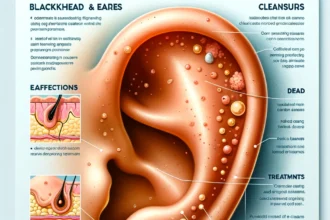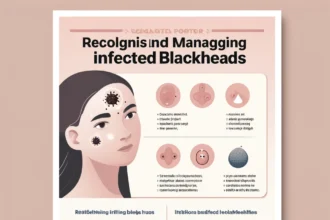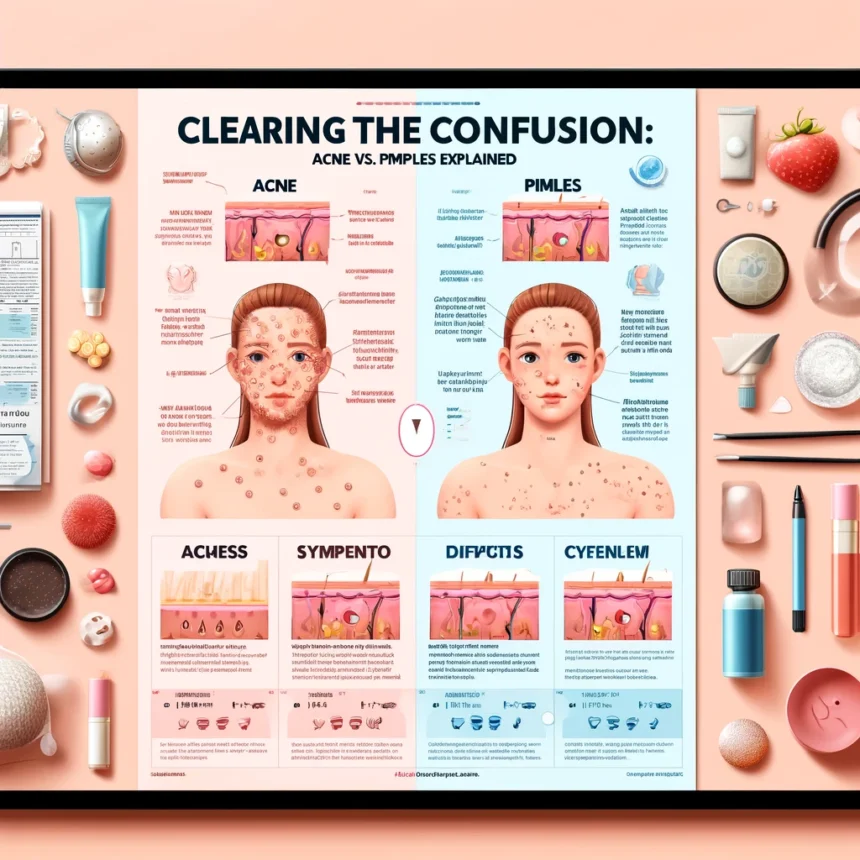An Introduction to Common Skin Complaints: Ever looked in the mirror and noticed a new blemish on your face? You’re not alone. For many, it’s a disheartening experience, especially when these blemishes persist or worsen. In this comprehensive exploration, we’ll dive into what exactly sets acne and pimples apart, backed by dermatological insights and real-life examples to guide you through identifying and treating your skin conditions effectively.
Acne vs. Pimples: Understanding the Terminology
While the terms ‘acne’ and ‘pimples’ are often used interchangeably, they refer to different phenomena. Let’s clarify these concepts with precise definitions:
What Are Pimples?
Pimples are a symptom of acne. They are individual spots that can arise anywhere on your skin. Pimples are inflammatory or non-inflammatory skin occurrences that manifest as:
• Blackheads: Open clogged pores
• Whiteheads: Closed clogged pores
• Papules: Small red, tender bumps
• Pustules: Papules with pus at their tips
What Is Acne?
Acne is a broader skin condition that involves the oil glands at the base of hair follicles. It is chronic and can vary in severity. Acne can consist of multiple pimples and involves:
• Excess oil production
• Clogged pores
• Bacterial infection
• Inflammation
Acne can be categorized into two types: non-inflammatory and inflammatory, which includes cysts and nodules that are deeper under the skin than typical pimples.
Causes of Acne and Pimples
The journey to understanding skin disruptions begins with identifying their causes. Here are some of the common culprits:
• Hormonal Changes: Significant during puberty, menstruation, pregnancy, and menopause.
• Diet: High glycemic foods and dairy products have been linked to acne.
• Stress: Increases cortisol levels, exacerbating acne.
• Poor Hygiene: Irregular cleansing can allow build-up on the skin surface.
• Cosmetics: Some makeup can clog pores, triggering outbreaks.
Real-life example: Consider Jane, a 29-year-old who noticed a surge in facial pimples during stressful periods at work. By addressing her stress through mindfulness and yoga, and tweaking her skincare routine, she managed to significantly reduce her breakouts.
Treatment and Management Strategies
Effective treatment hinges on understanding the type and severity of your skin condition. Here’s a breakdown of the strategies:
Over-the-Counter Solutions
For mild acne and occasional pimples:
• Salicylic Acid: Clears clogged pores and reduces swelling.
• Benzoyl Peroxide: Kills bacteria and removes excess oil.
• Adapalene: A topical retinoid that regulates skin cell turnover.
Prescription Medications
For more severe cases:
• Antibiotics: To combat infection and reduce inflammation.
• Oral Contraceptives: Used to treat acne in women by balancing hormones.
• Isotretinoin: For severe, resistant acne.
Lifestyle Adjustments
• Diet: Incorporating a low-glycemic diet rich in fruits, vegetables, and lean proteins can reduce breakouts.
• Stress Management: Techniques such as yoga, meditation, and adequate sleep can help manage acne.
• Skincare Regimen: Gentle cleansing and non-comedogenic products are key.
Preventative Measures
Prevention is preferable to treatment. To prevent acne and pimples:
• Cleanse Regularly: Use a gentle cleanser twice a day.
• Exfoliate: Helps remove excess cells and open pores.
• Stay Hydrated: Keeps your skin cells plump and healthy.
• Avoid Touching Your Face: Reduces the transfer of oils and dirt.
Conclusion
Understanding the distinction between acne and pimples can empower you to take proactive steps in managing your skin’s health. Remember, each skin type is unique, and what works for one person might not work for another. It’s important to consult with a dermatologist to tailor a treatment plan to your specific needs.
In a world where first impressions can leave lasting impressions, taking charge of your skin health is more than just a cosmetic endeavor—it’s an investment in your well-being and self-confidence. Engage with your skin, understand its needs, and treat it with care. Your future self will thank you for it.
By taking these steps, not only can you help manage present blemishes, but also prevent new ones from forming, setting the stage for healthier, clearer skin moving forward. Remember, the journey to clearer skin is a marathon, not a sprint, and requires persistence and consistency.







As a Newbie, I am always searching online for articles that can help me. Thank you
I enjoyed reading this and learned something new. This article is a treasure trove of information! This article is a treasure trove of information! This post is really informative and provides great insights! I’m bookmarking this for future reference. This blogpost answered a lot of questions I had. Fantastic job covering this topic in such depth! I’m definitely going to share this with my friends. Thanks for taking the time to put this together! I’m bookmarking this for future reference.
I’m definitely going to share this with my friends. Thanks for taking the time to put this together! Thank you for breaking down complex concepts so clearly. Excellent post with lots of actionable advice! This blog stands out among others in this niche. Thank you for breaking down complex concepts so clearly.
Can you be more specific about the content of your article? After reading it, I still have some doubts. Hope you can help me.
Thank you for your sharing. I am worried that I lack creative ideas. It is your article that makes me full of hope. Thank you. But, I have a question, can you help me?